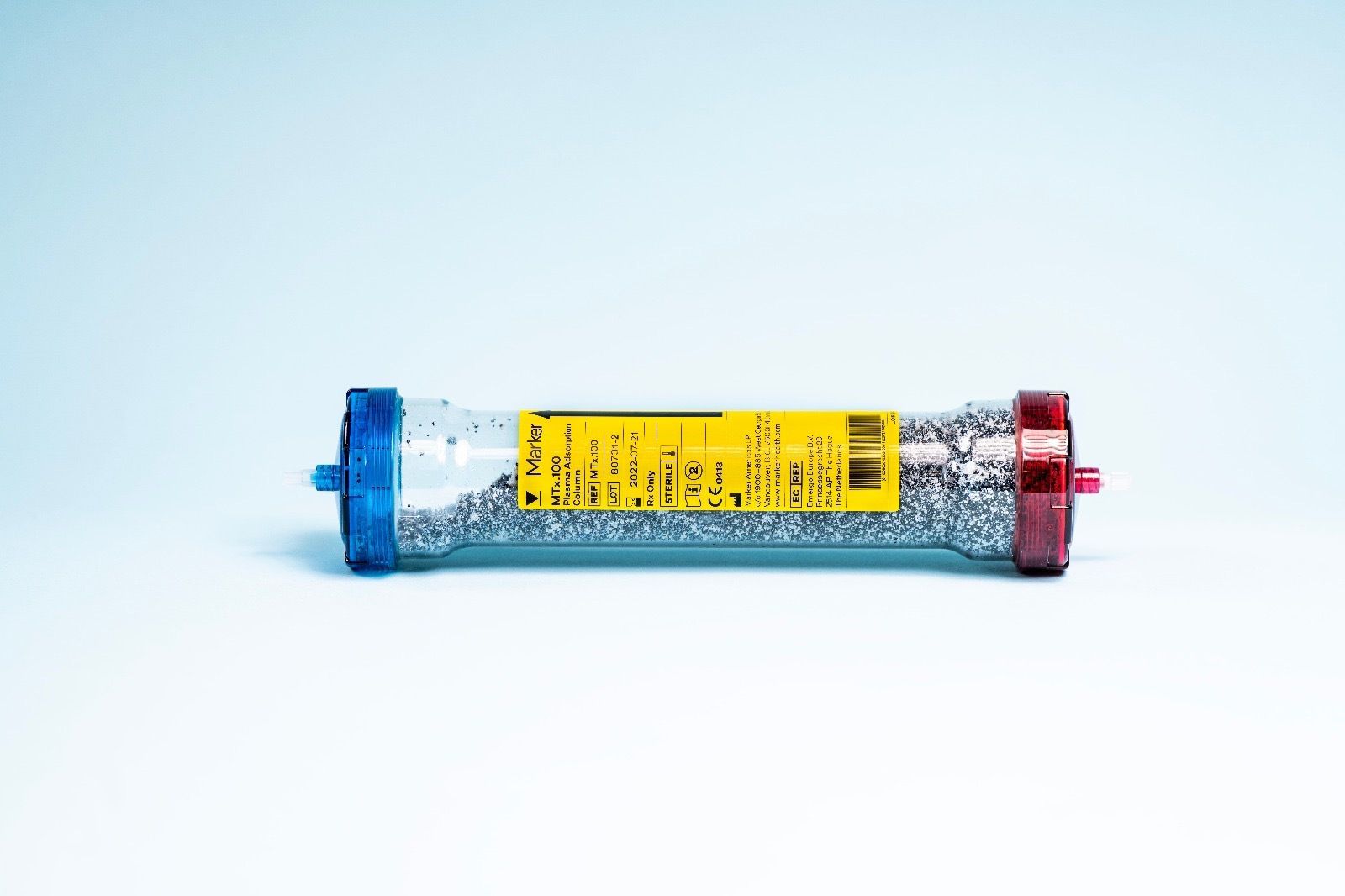This is a non-exhaustative list of places microplastics have been found: Mount Everest, the Mariana Trench, Antarctic snow, clouds, plankton, turtles, whales, cattle, birds, tap water, beer, salt, human plancentas, semen, breast milk, feces, testicles, livers, brains, arteries, and blood.
My blood, specifically. In early March I milked a few drops out of my fingertips and sent the sample to be tested for microplastics. I was in the London office of Clarify Clinics—a firm that offers to cleanse your blood of microplastics, forever chemicals, and other toxins, in treatments that start at £9,750 ($12,636).
Each week around 10 to 15 people walk into the basement clinic just off Harley Street—a road famed for its private clinics and wealthy clientele. After a consultation, the patients settle down in an armchair for the treatment. Blood is drawn from a cannula into a machine that separates out the plasma from blood cells. That plasma is filtered through a column that is supposed to trap microplastics and other undesirable chemicals, before being mixed back with the blood cells and pumped back into the patient. All-in-all the process runs for up to two hours—enough time to process 50 to 80 percent of the blood plasma volume.
“Once it’s running, you feel nothing. It’s very comfortable,” says Yael Cohen, CEO of Clarify Clinic. “Patients take calls, do Zooms, watch movies, sleep. The ones who sleep are my favorite.” They come for all kinds of reasons, Cohen says: Some are suffering with chronic fatigue, others with brain fog or long Covid. The clinic also runs treatments marketed toward people on Ozempic-style weight-loss drugs, looking to conceive, or ward off dementia.
What Clarify sells them is the hope of easing their symptoms by ridding their blood of microplastics, or other potential contaminants such as PFAS chemicals (per- and polyfluoroalkyl substances) and pesticides. But the science on how microplastics affect our health is still far from conclusive. A 2022 WHO report into microplastics concluded that there wasn’t yet enough evidence to figure out whether they posed a risk to human health. We don’t know microplastics are safe, the report concluded, but we also don’t know the risks they might pose.
“The dose makes the poison,” says Frederic Béen, an environmental contaminants researcher at the Amsterdam Institute for Life and Environment. “That’s the reason why it is important to determine accurately how much microplastics or any other type of environmental contaminants humans are exposed to.”
There have been an onslaught of scientific papers that have tracked microplastics to every inch of the Earth’s surface and deep within our bodies, but very few attempt to tease out the impact these have on our health. A 2022 review article found that microplastics were associated with harm to human cells, but didn’t examine actual health outcomes in living humans. A study in 2024 found that people who had microplastics in the fatty plaque within their carotid arteries had a higher risk of heart attacks and strokes than people who didn’t have microplastics in their arteries.
But the 2024 study didn’t establish any causal link between microplastics and health. The study was only observational, so it couldn’t prove that the presence of microplastics caused the higher risk of death for certain patients. There were also differences between the two groups studied—patients with microplastics in their arteries were more likely to be men, have cardiovascular disease, and smoke. It could be that these factors—or another unknown influence—were actually causing the difference in risk of death between the two groups.
The same uncertainties apply when it comes to measuring microplastics. I wasn’t particularly scientific when I milked that blood from my fingertip. Plastic fibers from my clothing or packaging could easily have made their way into my sample, and the same is true when any sample is analyzed, whether it’s from the environment or a human body. Béen and his colleagues go to extreme lengths to try to avoid contamination when they’re analyzing blood samples for microplastics. All of the equipment they use to take samples is plastic-free, the air in their lab is filtered, and they only wear cotton when working with the samples. “What we do is to make sure there is no plastic contamination, or to minimize it as much as possible given that microplastics are everywhere.”
We live in such a plastic-saturated world that it’s difficult to measure microplastics accurately, let alone link them to health outcomes. But Cohen says that her patients report higher energy levels or better sleep after trying the treatment. Cohen tracks her sleep quality on an Oura ring and says that before the treatment a score of 70 would be good for her, but in the six weeks after she tried the treatment she hadn’t dropped below 90—which, according to the Oura website, indicates “optimal” sleep.
Most of the patients come to the clinic through word of mouth. “People are posting it, they’re talking about it,” Cohen says. Patients post their blood microplastic results online before and after the treatment. “I think it’s a badge of honor to be doing your future self a favor,” she says.
Blood microplastic cleansing is just the latest in a long line of treatments based on uncertain evidence targeting wealthy individuals worried about their health. In the Bahamas, people pay tens of thousands of dollars for stem cell injections of unproven benefit. Longevity influencer Bryan Johnson has touted the benefits of total plasma exchange—removing plasma from the blood and supplementing it with proteins and antibodies on a regular basis.
“He’s a big platform, and he is spending a lot of time and energy finding the things that move the needle the most,” says Cohen.
In extreme cases of exposure to pollutants, some form of blood cleaning can be necessary. Earlier this year, residents of Jersey, an island in the English Channel, were recommended bloodletting after firefighting foams containing PFAS polluted drinking water supplies. High levels of PFAS exposure have been linked to some cancers and issues with brain development and thyroid function. Bloodletting would clean the blood over time by removing contaminated blood and allowing the body to replenish the blood naturally.
But for most people we simply don’t know what their blood microplastics levels are, or whether they are anything to worry about. My fingerprick test found around 190 microplastic particles per milliliter of blood, a result which apparently put me at the low end of the range of possible results. I emailed Cohen to tell her I was pleased with my results. “Glad you were pleasantly surprised, but that’s still around a million particles in your circulatory system!” she responded.




